Literary Elements Teaching Resources
Are ou teaching literary elements and looking for worksheets and activities to get students excited about tone, narration, plot and a host of other elements to writing a great story? How do you engage elementary students on the concept of character traits and make plot development as exciting as recess?
The ELA teachers on the Teach Starter team have done just that with a collection of printable worksheets and digital activities built around this core reading standard. Aligned with both TEKS and the Common Core English curriculum, each literary elements activity in the collection has undergone a careful review by a member of our teacher team to ensure it's ready for your lesson plans and your students.
Explore our teacher team's guide to learn more about the various literary elements and how to bring them to life in your classroom!
Is this your first year teaching this sector of ELA? Or the first year in a while? Our teacher team has put together a quick refresher to get you ready to rock and roll in the classroom, including a way to explain what literary elements are to students.
What Are Literary Elements? A Kid-Friendly Definition
First thing's first: Let's talk about the definition.
Literary elements are the basic components of writing that the author uses to share the story with the reader. Without them, the narrative falls apart!
They are sometimes referred to as narrative elements. No matter what you call them, these elements give a piece of writing structure and help the author convey information to the reader.
On the reading side, literary elements are also key to breaking down a story to understand better what the author is trying to say.
What Are Examples of Literary Elements? 8 Examples That Can Help Your Students
There are eight main examples of literary elements that students will encounter in narrative texts:
1. Setting
This element is crucial for developing a story as it provides the time in which the story takes place as well as where it takes place. Setting helps ground the story.
2. Plot
The plot is the way a story unfolds. It's essentially a pattern for the text.
3. Conflict
Conflict helps move a plot forward as it offers the reader a climax to move toward as they read.
4. Characterization
This element of writing covers the way characters are developed within a story.
5. Point of View
Also called narration, this literary element is the perspective from which a story is told, such as first person or third person.
6. Tone
The tone of a story can be boiled down to the author's attitude about the subject of the story.
7. Genre
Genre covers the type of story written, such as realistic fiction, science fiction or even magical realism.
8. Figurative Language
Similes, metaphors, and onomatopoeia are just some examples of the figurative language students encounter in a text.
- Plus Plan
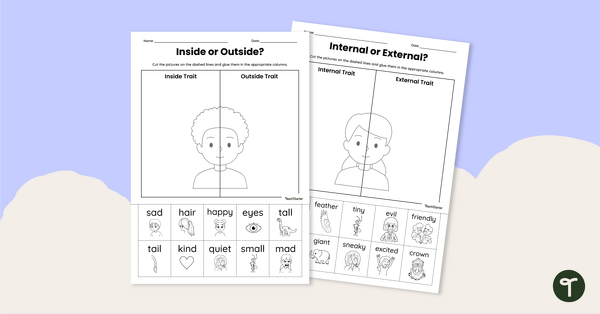
Internal and External Character Traits - Cut and Paste Worksheet
Explore the internal and external traits of story characters with this differentiated cut-and-paste worksheet.
- Plus Plan
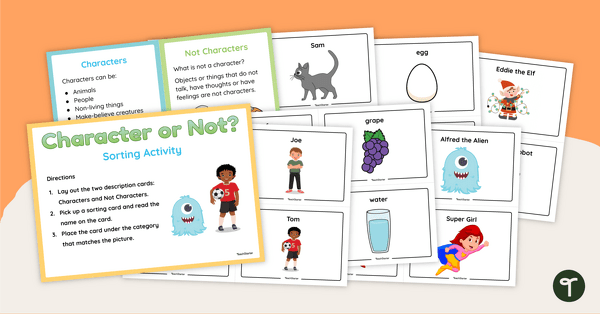
Character or Not? - Sorting Activity
Explore the difference between characters and non-characters with this hands-on sorting activity.
- Plus Plan
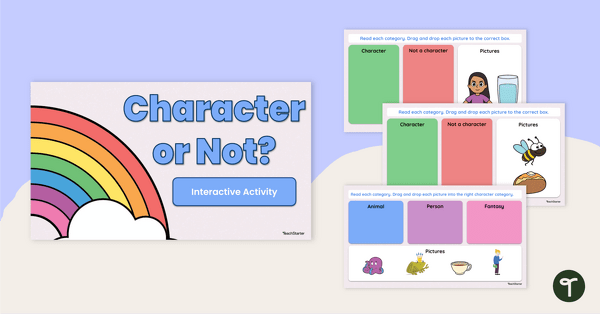
Character or Not? - Interactive Activity
Explore the difference between characters and non-characters with this digital learning activity.
- Plus Plan
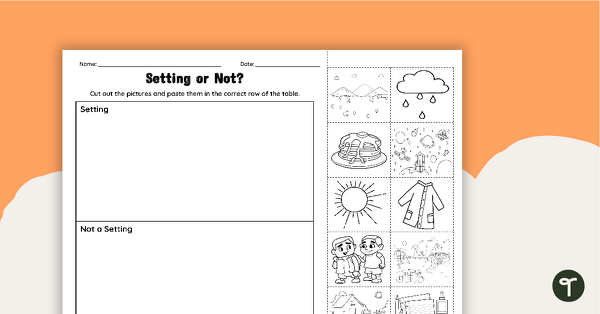
Story Setting or Not? Cut and Paste Worksheet
Explore the difference between story settings and non-settings with this cut-and-paste worksheet.
- Plus Plan
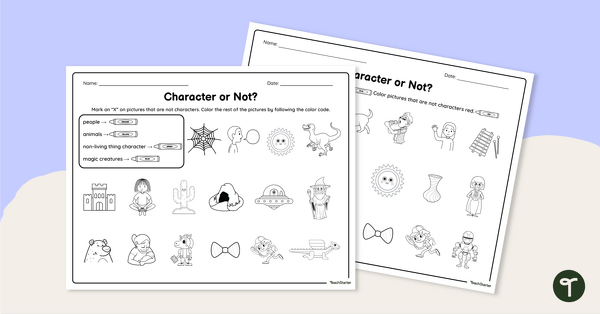
Character or Not? - Coloring Worksheet
Explore the difference between characters and non-characters with this coloring worksheet.
- Plus Plan
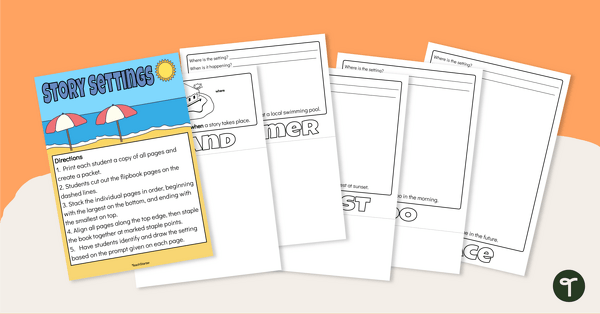
Story Settings - Flipbook
Teach your students about story settings with this hands-on flipbook.
- Plus Plan
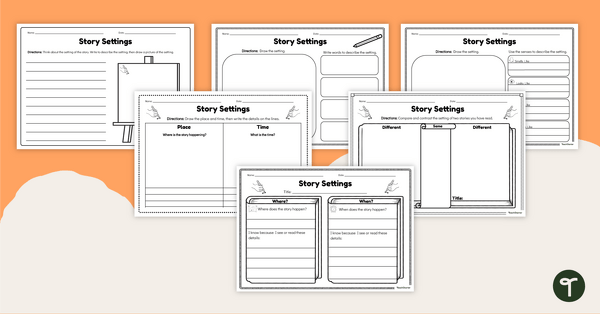
Story Settings - Graphic Organizers
Encourage your students to write and draw about story settings with this set of differentiated graphic organizers.
- Plus Plan
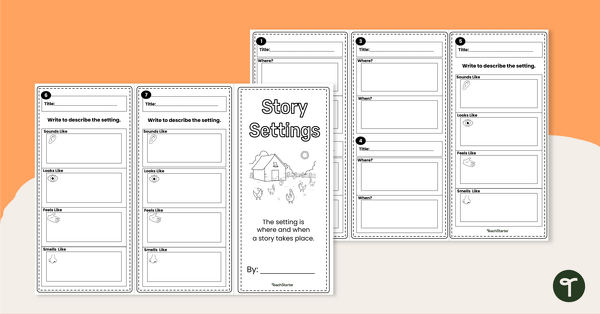
Story Settings - Brochure Template
Encourage your students to identify story settings in the books they read with this brochure template.
- Plus Plan
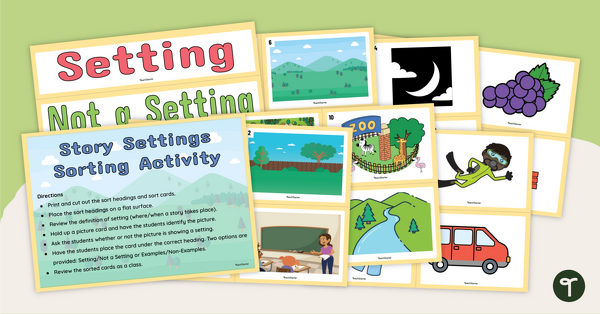
Story Setting or Not? - Sorting Activity
Explore the difference between story settings and non-settings with this hands-on sorting activity.
- Plus Plan
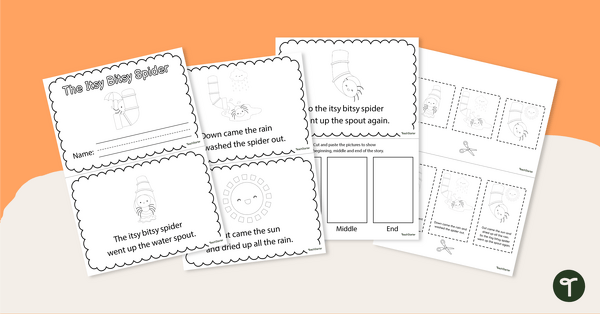
Beginning, Middle and End Mini-Book - Itsy Bitsy Spider
Teach your students about the beginning, middle and end of a story with mini-book retelling of The Itsy Bitsy Spider.
- Plus Plan
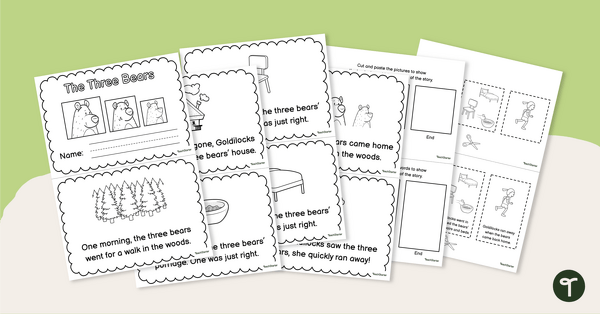
Beginning, Middle and End Mini-Book - The Three Bears
Teach your students about the beginning, middle and end of a story with this mini-book retell of The Three Bears.
- Plus Plan
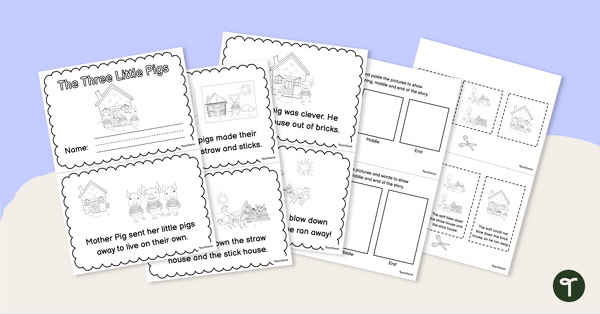
Beginning, Middle and End Mini-Book - The Three Little Pigs
Teach your students about the beginning, middle and end of a story with this mini-book retell of The Three Little Pigs.
- Plus Plan
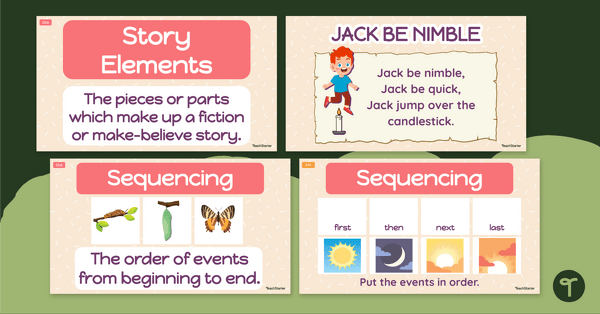
Story Elements: Sequencing Jack Be Nimble
Teach your students the art of sequencing with an instructional slide deck surrounding the Jack Be Nimble nursery rhyme.
- Plus Plan
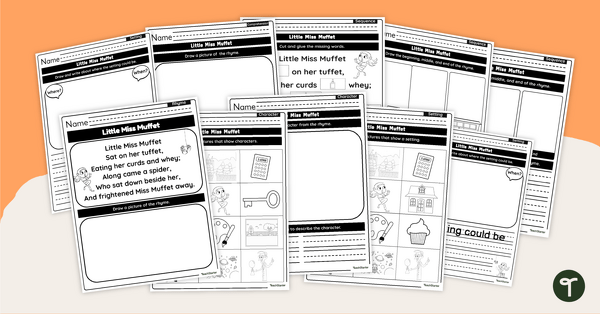
Little Miss Muffet - Story Elements Worksheet Pack
Identify characters, setting, and parts of a story with kindergarten reading worksheets featuring the Little Miss Muffet nursery rhyme.
- Plus Plan
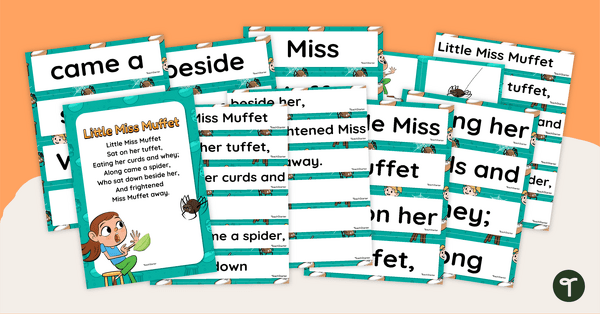
Little Miss Muffet - Sequencing Cards
Read and retell the story within the tale of Little Miss Muffet with a set of retelling pocket chart cards.
- Plus Plan
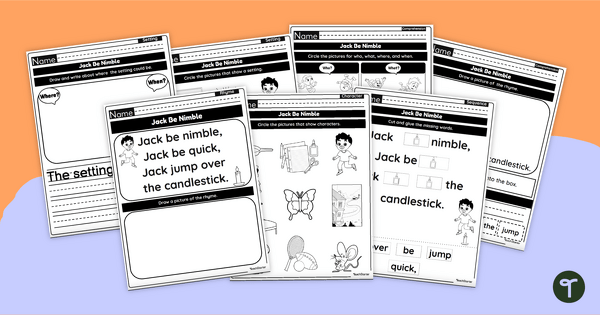
Jack Be Nimble - Story Element Worksheets
Demonstrate learning about the parts of a story with a printable set of Jack be Nimble Story Element worksheets.
- Plus Plan
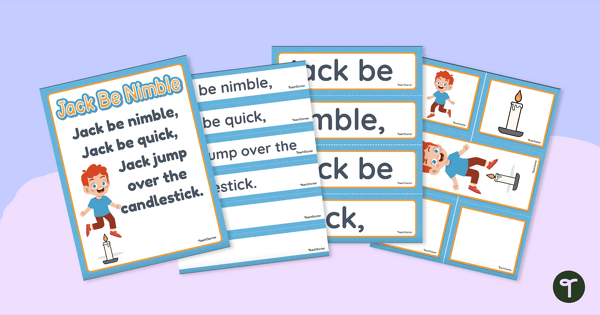
Jack Be Nimble - Pocket Chart Sequencing Cards
Read and retell the story of Jack Be Nimble with a set of retell pocket chart cards.
- Plus Plan
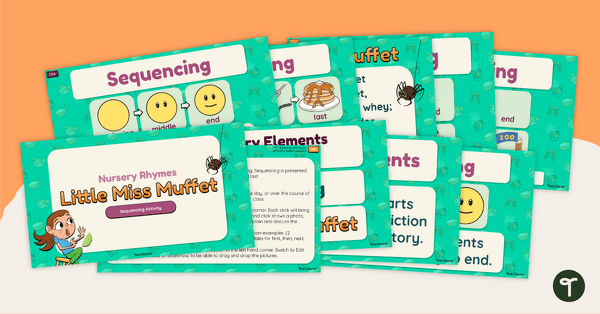
Little Miss Muffet - Sequencing Slide Deck
Engage young readers in texts and learn about setting with an instructional slide deck featuring the Little Miss Muffet rhyme.
- Plus Plan
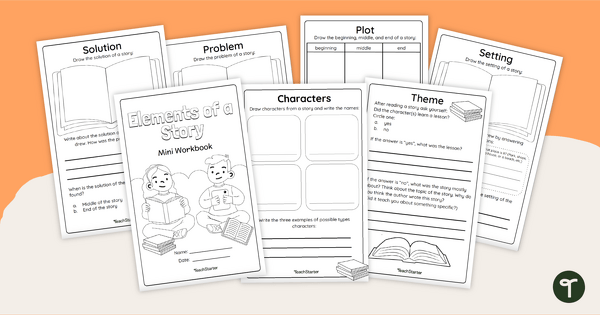
Parts of a Story - Story Elements Workbook
Explore the different elements of a narrative story with this student mini workbook.
- Plus Plan
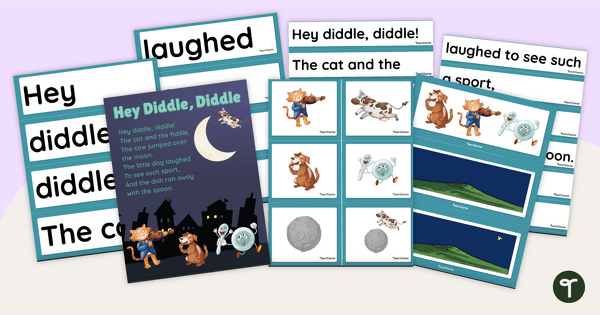
Hey Diddle Diddle - Sequencing Cards
Sequence the events in “Hey Diddle Diddle” with a set of retelling pocket chart cards.
- Plus Plan
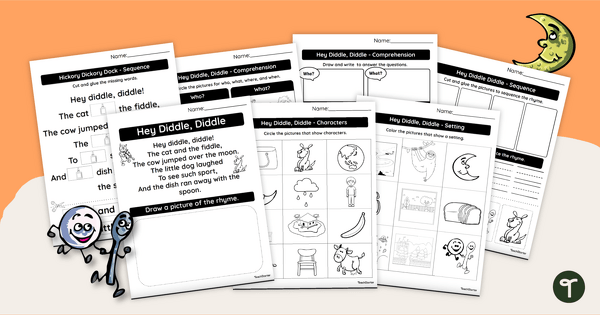
Hey Diddle Diddle Worksheets
Identify characters, setting, and parts of a story with kindergarten reading worksheets featuring the “Hey, Diddle, Diddle” nursery rhyme.
- Plus Plan
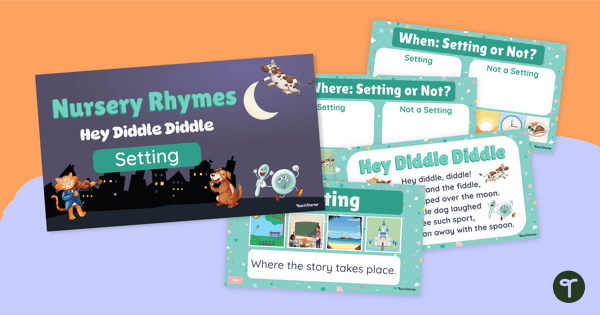
Hey Diddle Diddle - Story Elements Slide Deck
Engage young readers in texts and learn about setting with an instructional slide deck featuring the Hey Diddle Diddle rhyme.
- Plus Plan

Humpty Dumpty Pocket Chart Retell Cards
Read and retell the story within the Humpty Dumpty tale with a set of retelling pocket chart cards.
- Plus Plan
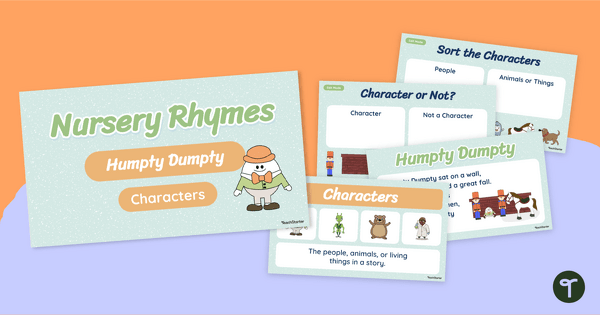
Humpty Dumpty Teaching Slides - All About Characters
Engage young readers in texts and learn about characters with an instructional slide deck featuring the Humpty Dumpty rhyme.
- Plus Plan
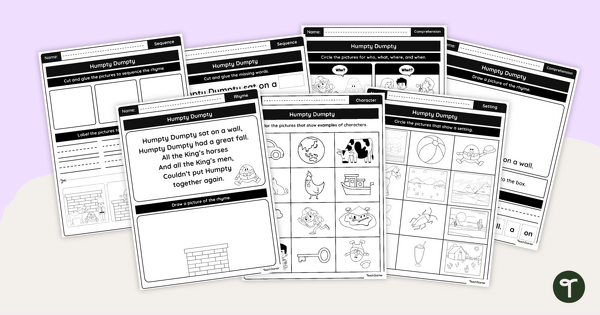
Humpty Dumpty Worksheets - Character, Setting, and Story Elements
Identify characters, setting, and parts of a story with kindergarten reading worksheets featuring the Humpty Dumpty nursery rhyme.
- Plus Plan
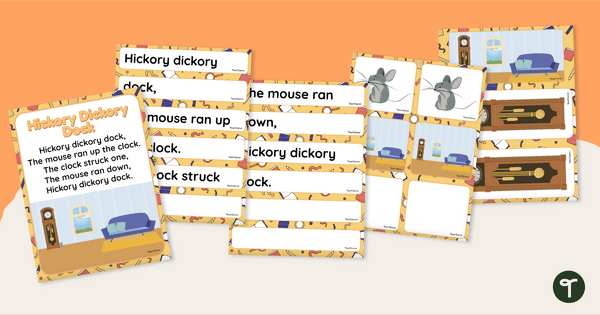
Hickory Dickory Dock - Pocket Chart Retell Cards
Read and retell the story found within the nursery rhyme Hickory Dickory Dock with a set of retell pocket chart cards.
- Plus Plan
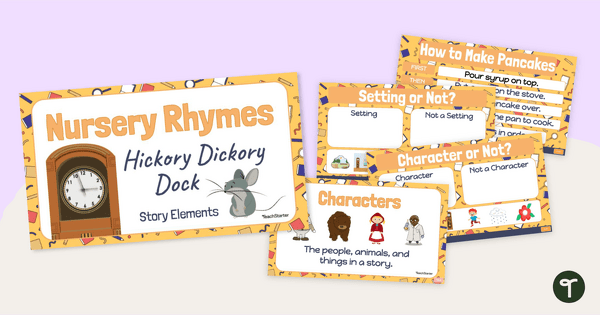
Hickory Dickory Dock - Story Elements Slide Deck
Engage young readers in texts and discover parts of a story with an interactive version of Hickory Dickory Dock.
- Plus Plan
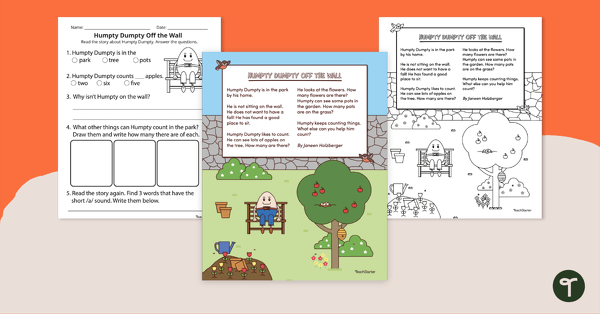
Humpty Dumpty Off the Wall - Reading Comprehension
Assess first-grade reading comprehension skills with a Humpty Dumpty Reading passage and comprehension worksheet.
- Plus Plan
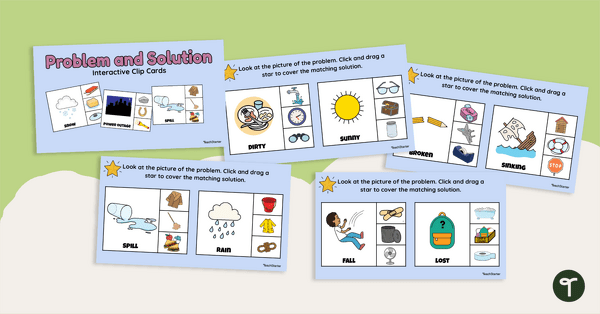
Problem and Solution Interactive Clip Cards
Practice identifying problems and solutions with an interactive clip card activity.
- Plus Plan
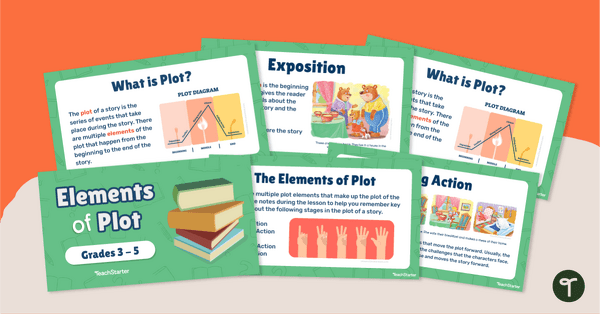
Elements of Plot Teaching Presentation
Teach them to your students with a Plot Elements Teaching presentation.
- Plus Plan
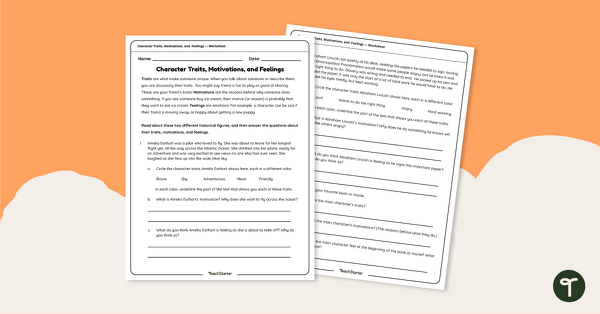
Character Traits, Motivations and Feelings Worksheet
Analyze character traits, feelings and motivations with this two-page worksheet.
- Plus Plan
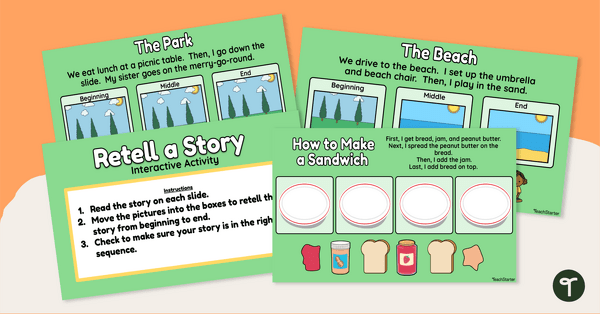
Google Slides Interactive - Story Retell Activity
Use this Google Slides Interactive activity to practice retelling stories.
- Literary Elements Worksheets
- Literary Elements Templates
- Literary Elements Games
- Literary Elements Posters
- Literary Elements for Kindergarten
- Literary Elements for 1st Grade
- Literary Elements for 2nd Grade
- Literary Elements for 3rd Grade
- Literary Elements for 4th Grade
- Literary Elements for 5th Grade
- Literary Elements for 6th Grade